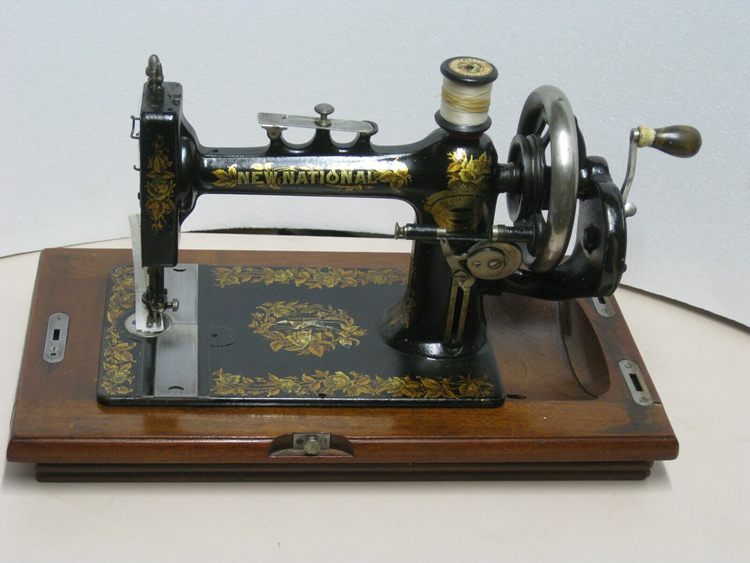
A collectible machine is so much more than a machine mass-produced; it is a collectible that possesses characteristics we often cannot define but recognize when they float our way. We hear the term investment grade and think it refers to those collectibles with high prices, such as antiques, artworks, and classic cars. However, the term also applies to another class of collectibles – vintage National sewing machines.
If you’re interested in vintage sewing machines, you should know about the National brand. National sewing machine company is one of the most reputable sewing machine companies. Since its inception, this company has created a solid customer base. With its advanced technology and innovative tools, it gained customer faith in the very first attempt.
When it comes to valuing National sewing machines, it isn’t always easy. There’s a lot of conflicting information out there – and if you’re not careful, you might get duped by a seller or dealer who is only looking to take advantage of your inexperience. This guide is going to make it easy for you, though. We want to take you through some steps you can use today to determine an accurate value for an antique National sewing machine in its current condition.
Let’s start reading
Table of Contents
History of the National sewing machine company.
It took a great deal of time and effort to make clothing in the early 1900s, as most people sewed it with thread and needles.
The sewing machine was invented in the late 1800s but was expensive and not widely available until the early 1900s.
It was not until the late 1800s and early 1900s that sewing machines were developed into more sophisticated designs. Charles Fredrick Wiesenthal invented the first model in 1755, but it didn’t gain steam until much later when James Ward designed an improved version of Wiesenthal’s machine; however, his new design wasn’t widely used due to its high price tag.
For many years, the sewing machine industry was embroiled in litigation as competing companies sued each other for patent infringement. They claimed that competitors had copied their designs with machines of similar design.
When it came to early manufacturers of sewing machines, the National Sewing Machine Company was unusual in that it had a manufacturing facility in the Midwest rather than New England.
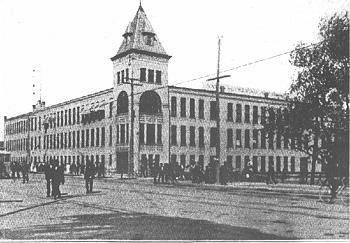
The history of the National Sewing Machine Company (NSM) begins with a man named Barnabas Eldredge. He was one of many inventors working on their machines to compete with Elias Howe’s recently patented lockstitch design. Eldredge’s machine was successful, and he sold it to other manufacturers.
Eldredge’s initial efforts were successful, but he quickly learned that his target audience lived in the Northwest.
National Sewing Machine Company began its operations with the cooperative firm June Manufacturing Company in Chicago, Illinois. It quickly became one of the largest producers of sewing machines in the country. At this time, many sewing machines were available on the market—some were made by hand, large companies like Singer produced some, and some were created in small workshops.
The company’s goal was to create a product that would be affordable enough for people with modest incomes while still being influential.
The company overgrew throughout the 1870s and 1880s. The Jennie June, first introduced in 1879 and modeled after a Singer model, was one of his most famous and profitable designs. By 1881 it was employing highly skilled workers and producing innovative and profitable machines yearly.
In 1890, the company began selling sewing machines under its name NATIONAL SEWING MACHINE rather than rebranding them from other manufacturers as they had done before. In 1953, National Sewing Machine shut down after struggling to compete with Japan’s rising manufacturing base.
National sewing machine Models
Sewing machines have been around since the 19th century. They have changed a lot since then and are now used by people worldwide. And because there are so many sewing machines, it can be hard to know what you’re looking at.
The Eldredge Sewing Machine Company (founded in 1869) and the June Manufacturing Company (founded in 1881) merged in 1890 to form the National Sewing Machine Company of Belvidere. The company became one of the largest sewing machine manufacturers in America and continued to grow throughout the 1900s until it closed its doors in 1953.
The following models were made between 1877 and 1950 and are still used today. The model number will be on the front of the machine, on a metal tag attached to the top, or stamped on the bedplate. Some models also have an identification number stamped directly into the metal bedplate.
National sewing machines are still highly collectible today. If you own one of these old machines, you can sell it for thousands of dollars or use it as an investment that will continue to increase over time.
Let’s look at the popular models of the National Sewing Machine.
● Model A- 1910
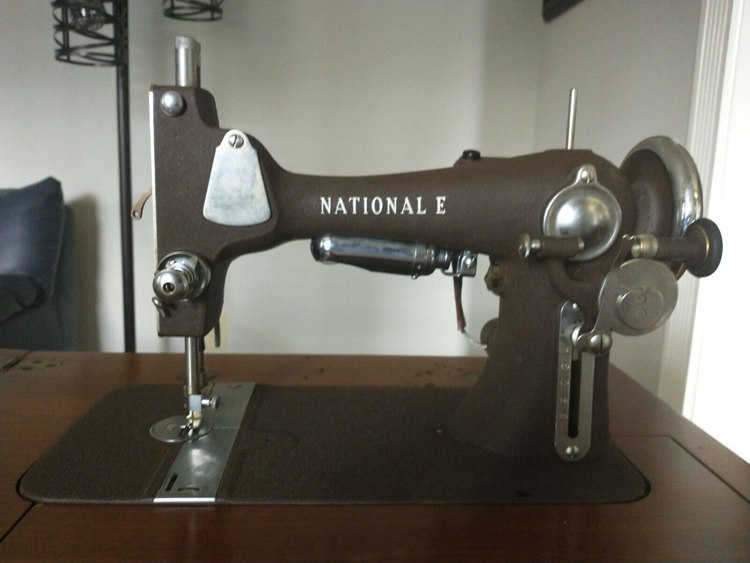
The Old National Model A is a vintage sewing machine made by the Old National Sewing Machine Company in early 1910. The Model A features a hand crank and an automatic feed that allows you to sew faster than most other machines on the market at that time. It can also be operated by a foot pedal if desired, although this is not recommended for beginners.
● American Girl
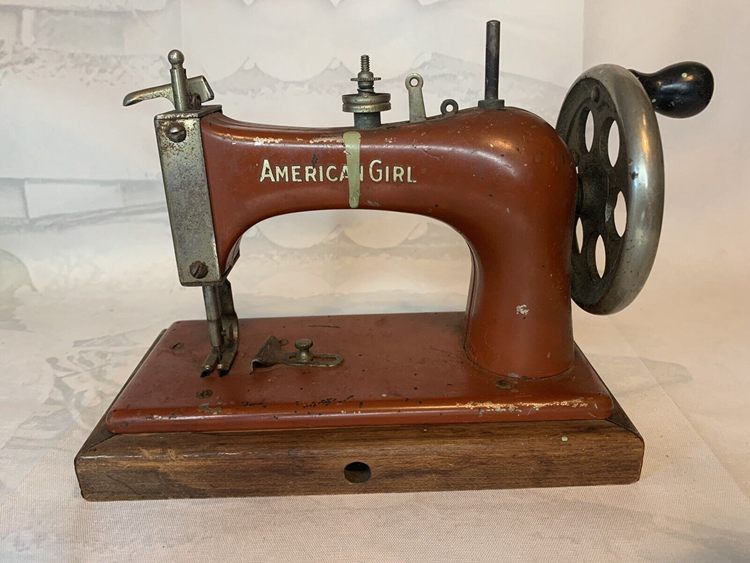
The American Girl sewing machine is straightforward, with only a few stitches and no automatic needle threader. It’s not going to win any awards for features, but it does what it does well. The stitch patterns are easy to set up, and the bobbin is easy to load.
● Reversew
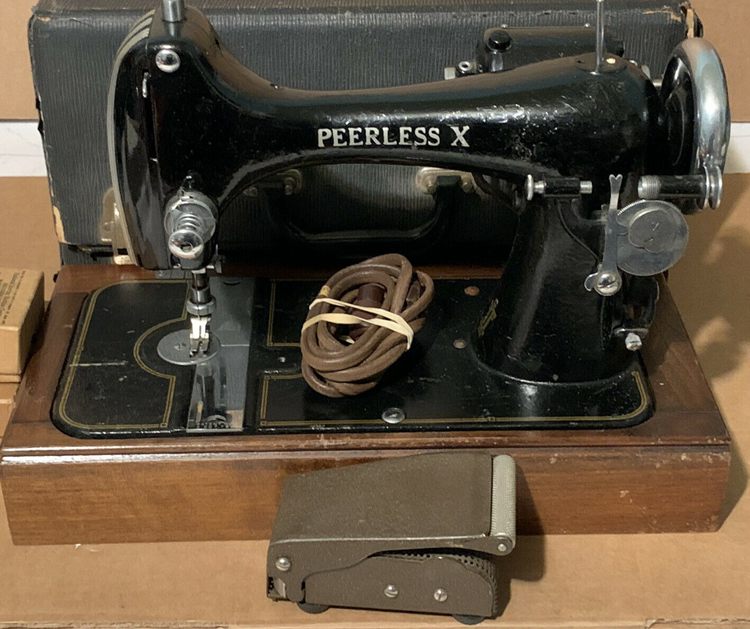
Reversew the most innovative design in sewing machines. Reversew is the only old national model that allows you to sew backward with your machine. Reversew lets you sew backward, which can be very useful if you need to undo a seam or want to sew from the wrong side of your fabric.
This may seem an obvious idea now, but it was one of the most innovative features available in any sewing machine! Moreover, It is an excellent feature for sewing professionals and hobbyists alike!
● Sunshine (1890)
The Sunshine sewing machine was manufactured by the New Home Sewing Machine Company of Chicago, Illinois, in 1890. This was the first sewing machine to have a drop-in bobbin. The Sunshine had an exposed tension assembly that could be adjusted with a screwdriver or coin.
The stitch length adjustment knob was on the machine, just above the needle plate. The stitch width adjustment lever was located on the side of the machine, under the bobbin winder arm.
● Vindex C -1912
The C. Vindec-1912 is an old National sewing machine model with a unique design and was made using high-quality materials. The machine has remarkable presser feet, making it versatile and easy to use. In addition, this function prevented dirt from getting into the machine, which would have resulted in the bearings wearing out more quickly.
● Governer A -1900
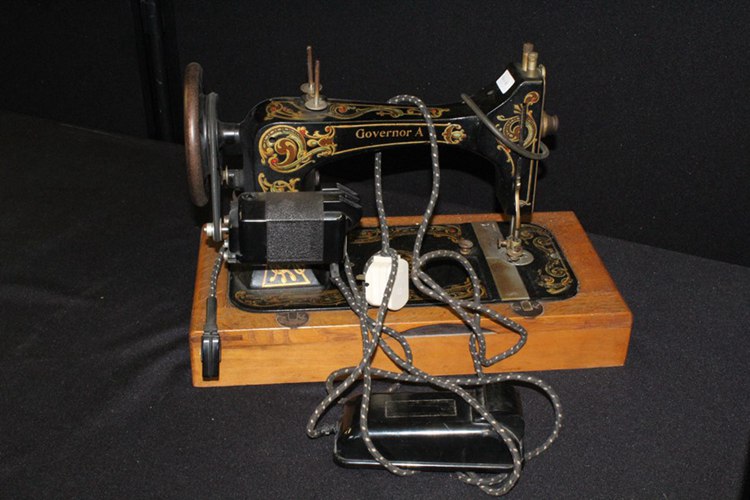
This machine(also known as Improved Elderge B.) dates back to 1900; its configuration is similar to that of an Eldredge machine. The machine was redesigned and sold by several vendors in the 1920s. The machine, the shuttle, and the accessories box were all sold together as a set.
● Rotary Series -1910 to 1930
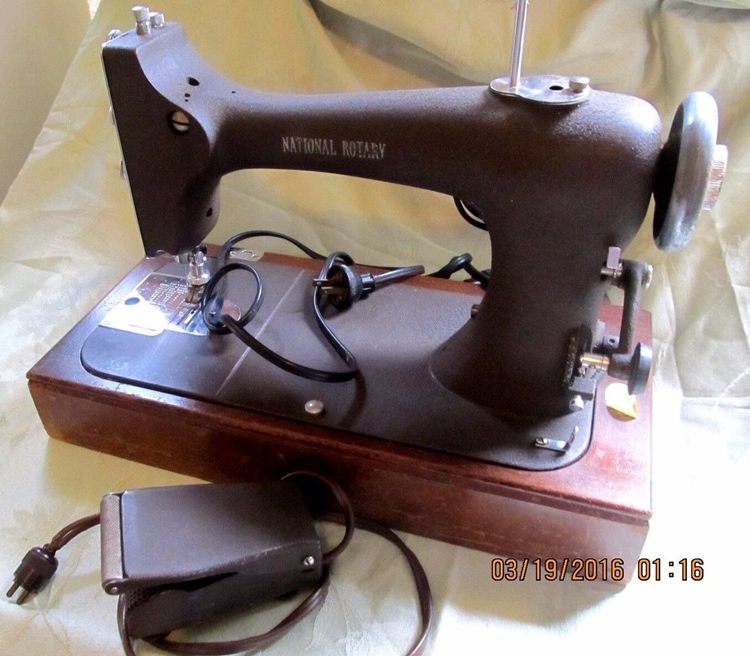
The Old National Sewing Machine Company made the Rotary series of sewing machines from 1910 until 1930. The early models had a hand crank, but later models were electric.
It was the first electric sewing machine made by Old National, featuring several new improvements over the company’s previous models. These included an improved feed mechanism and a foot treadle that could be moved up or down to accommodate different heights of operators.
- The Rotary B was first introduced in 1920 and was available in manual and powered variations.
- Portable and operated by hand, the Rotary 110was first shown to the public in 1929. A sturdy case protected it.
- The handy electric machine,the Rotary 1120, comes with a robust carrying box.
● Eldredge- Before 1890
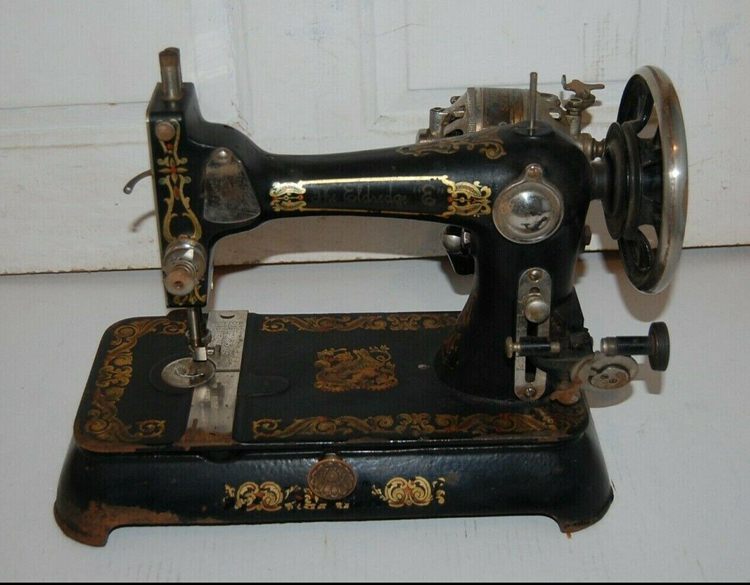
The models of national sewing machines manufactured before 1890 belong to the Eldredge series, including Eldredge B.
Value of a vintage National Sewing Machine
Old National sewing machines are antiques and often sell for hundreds of dollars. If you have an old National that no longer sews, you may wonder how much it’s worth.
The best way to determine the value of your machine is by taking it to a dealer, who can tell you what it is worth based on its condition and model number. However, there are some things you can do yourself to get an idea of what it might be worth.
● Type Of Machine
The most crucial factor is the model of the sewing machine you have. The company produced many different models, each with its history, meaning that it can be worth more or less than other models.
Old National sewing machines can be three types
- Hand Sewing Machine
- Treadle Sewing Machine
- Electric Sewing Machine
● Mechanical Function
The first thing to do is ensure that your machine’s mechanical function works properly. This includes checking for loose screws and bolts, pulling out the needle bar, and making sure it moves freely without any resistance or grinding noise. Check all gears and pulleys for damage or wear.
You should also check under the bedplate to see if any parts are missing or damaged. If any parts are missing or if they don’t work correctly, this will significantly affect the price of your machine when selling it at an antique shop or online auction sites such as eBay or Craigslist.
● Condition
The condition of an antique sewing machine is critical to determining its value. If your antique sewing machine is still in working order, that’s good news for you because it means you can use it or sell it. However, if your antique sewing machine has been damaged or broken, its value will be less than a working model.
● Age
The age of your machine will also determine its value. Older machines were often made with higher quality materials than newer ones. If you have an antique sewing machine built in the late 1800s or early 1900s, it’s worth quite a bit more money than some newer models from today’s market.
However, don’t despair if your machine is from more recent years; even newer ones can still be valuable pieces of equipment for any seamstress or tailor who wants to make money by creating custom garments for clients!
● Case
The case of the machine is an integral part of determining its value. The cases on these machines are made from metal or wood. Metal cases are more valuable than wooden ones but tend to show wear and tear more easily.
If your case is made of metal, look at its condition carefully. Does it have dents or other signs of damage? Are there any rust spots? If so, you may want to consider getting a new case rather than trying to restore yours.
● Some Valuable Sewing Machines
Today, National sewing machines are sought after by collectors because of their rarity and age and because they are considered high-quality machines designed for home and industrial use.
The value of a National sewing machine depends on whether it is an antique or vintage model.
- Cast iron hand crank National sewing machine: Sold at $750
- Eldredge Model Sewing Machine: sold for $369.76
- American Girl Model: Sold for $85.
How to Identify a National Sewing Machine?
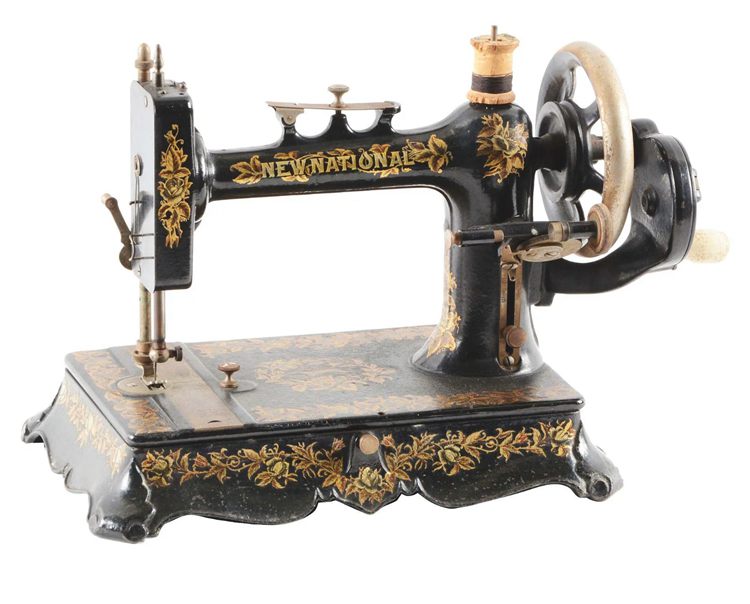
If you are looking at a sewing machine that the National Sewing Machine Company made, some features will help you identify it.
● Serial Number
The serial number of a National sewing machine is a unique set of numbers that identifies the model, year, and factory where it was manufactured. The serial number is usually located behind the needle plate or the presser foot.
● Sewing Quality
Sewing quality is the most critical factor in identifying a machine. The quality of a machine’s stitches is determined by how many stitches per inch it can produce. A good rule of thumb is that a sewing machine that produces more than 12 stitches per inch is considered high quality, while those with fewer than ten stitches per inch are of poor quality.
To check the sewing quality, sew several inches of simple straight lines on both sides of the fabric and look at the results. If your machine has an adjustable stitch length, use the most extended setting and set it to throw as few needles as possible.
● Mark identification
Old National sewing machines have some identifying marks that will help you identify them. The first thing you should look for is the serial number. This can usually be found on the bottom of the machine or sometimes on the belt guard. The serial number will give you information about when your machine was made, who made it, and how many were made.
Another thing to look for is the name “Old National” stamped into the metal frame near the needle plate or bobbin case. Some models also have an embossed “No1″ mark next to this stamping.
● Innovative Features
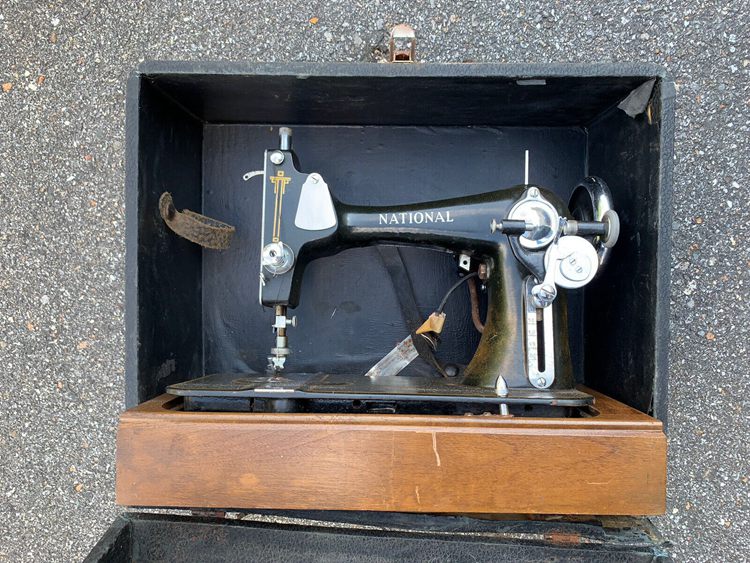
The Old National Sewing Machine Company produced many sewing machines, including a treadle model, a hand crank model, a foot pedal model, and even a treadle sewing machine with an electric motor.
So, Old National sewing machines can be identified by these different features that set them apart from other sewing machines.
National Sewing Machines Sold Under Other Brands
National Sewing Machine had established cooperative relationships with several other businesses, allowing it to produce sewing machines for those businesses, which were then marketed and sold under the companies’ respective names. However, those machines were National sewing machine property the whole time.
- New Home
- Velox
- General Electric
- Detroit
- Harris
- Texas Advocate
- Montgomery Ward
Where to Find Vintage National Sewing Machines for Sale
If you’re looking for a vintage National sewing machine, there are several places where you can find one.
● Antique store or Flea market
The first place to look is at an antique store or flea market. These are great places to find old sewing machines and other antique items. The only problem is that the prices will be high, especially if the machine is in good condition. It might be a better deal if you find one that needs some work.
● eBay or Craigslist
Another option is to look on eBay or Craigslist. Many people sell items on these sites and may also have older National sewing machines available. You can usually find them listed under the “Antiques” category on eBay or the “Furniture/Appliances” category on Craigslist.
● Thrift stores
You can also check out local consignment shops or thrift stores for vintage National sewing machines for sale. These places often get donations from people who want their old stuff taken away from them, and these donations frequently include old sewing machines in good condition that need a little cleaning up before they can be used again.
Final Thoughts
The National sewing machines are classic pieces of Americana. It is also a significant investment and an heirloom that you can pass on to future generations. As you can tell by reading this guide, there are many factors to consider when determining the value of your vintage national sewing machine.
If you’re interested in learning more about it and its history. In that case, we recommend heading to the National Sewing Machine Company’s website—they have a wealth of information on their products and their place in American culture.
And if you’re looking to buy one? Well, that’s another story! You can find them online or at antique shops across the country. Just be careful: some sellers may try to pass off modern machines as vintage ones. But if you follow our tips above, you should be able to spot the real deal with ease!





![Where To Sell Antique Furniture In 2022 [Ultimate Guide]](https://www.jacquelinestallone.com/wp-content/uploads/2022/09/Etsy-Your-Place-To-Buy-And-Sell-All-Things-Handmade-600x450.jpg)


